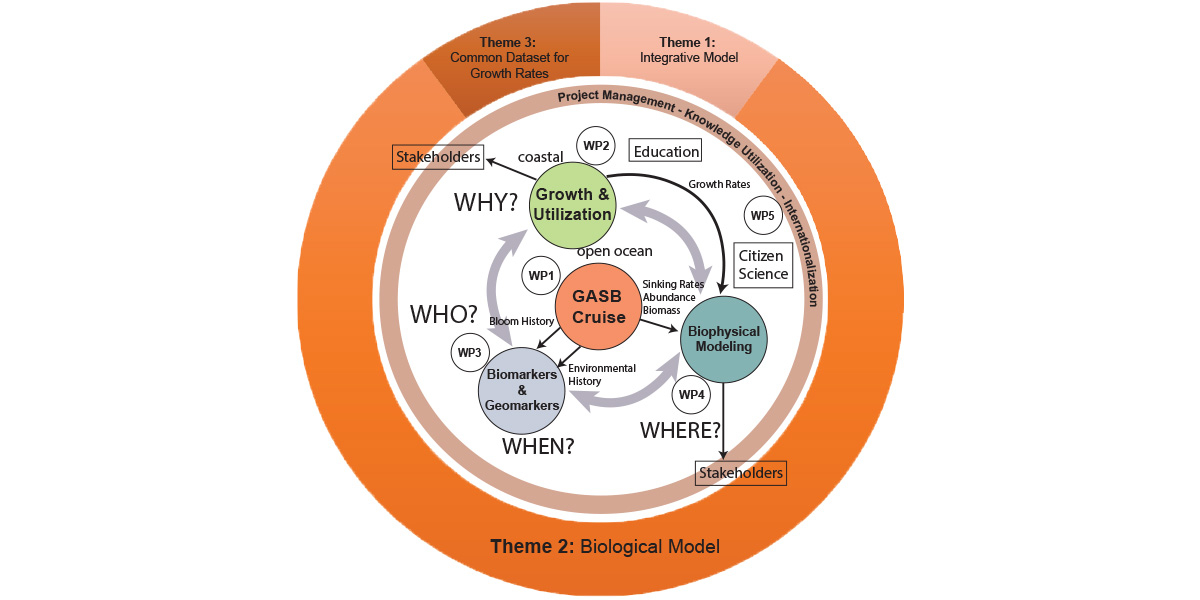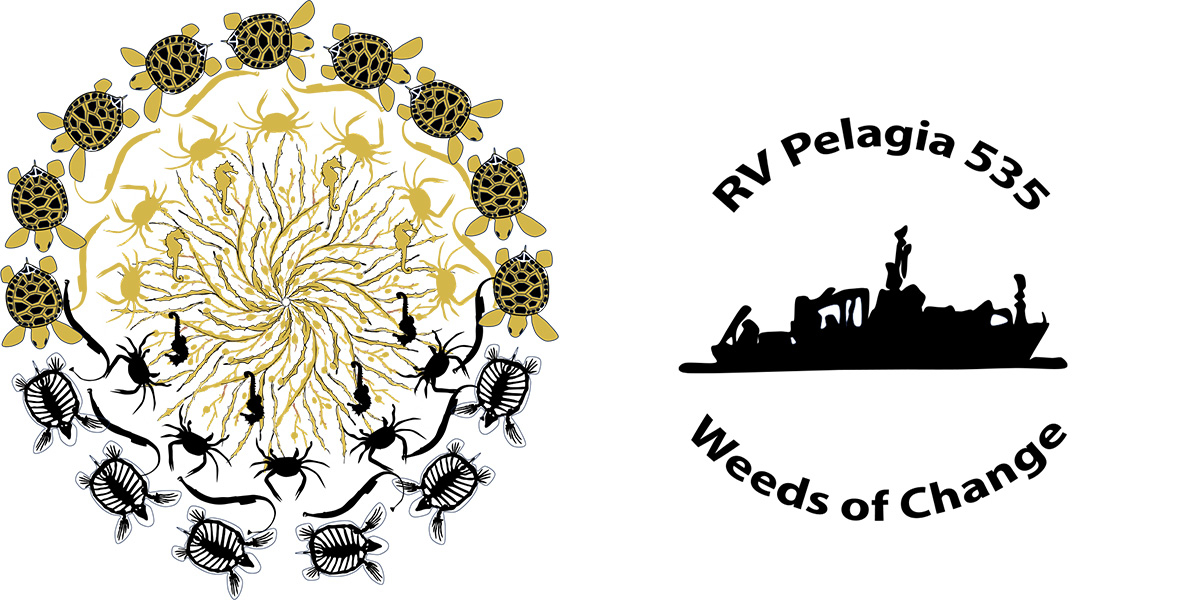Weeds of Change
Weeds of Change
The brown macroalgal genus Sargassum, the namesake of the Sargasso Sea which is also known as the "golden floating rainforest of the Atlantic Ocean", is an essential habitat and refuge for many organisms including endemic species. The holopelagic Sargassum species, S. fluitans and S. natans, have historically been geographically constrained to the open waters of the Sargasso Sea and Gulf of Mexico. However, these species have recently begun forming massive accumulations in the Tropical part of the Atlantic Ocean, resulting in unprecedented strandings impacting three continents: the coasts of the Gulf of Mexico, Florida, Mexico, Caribbean-island nations, northern Brazil and western Africa.

Research objectives
There is uncertainty regarding the sources and sinks of Sargassum. This project addresses the following related key questions:
- How are Sargassum subpopulations carried and distributed by ocean currents?
- How genetically and physiologically variable are the Sargassum species in the Tropical Atlantic Ocean and how does this impact Sargassum bloom dynamics?
- Can we combine geomarkers and biomarkers to infer the recent history of Sargassum species’ composition, distribution, and abundance from the sedimentary record?
- Are the accumulations of the last decade the result of environmental changes or a natural range expansion of Sargassum spp.?
- What is the basin-scale connectivity of Sargassum and how has it changed over the last decades?
Our international, transcontinental consortium includes interdisciplinary work packages that combine biological modelling, physical oceanography, shipboard and field-oriented physiological experiments combined with laboratory approaches, and a poly-phasic marker approach on current and past Sargassum populations.

News and updates
Sargassum blooms and marine plastic bring potentially unhealthy bacteria to the beach
A blessing for biodiversity at sea, but a disaster for tourism on the beaches
An interview (in Dutch) with former PhD student Tom Theirlynck. Read more
The first Sargassum Research Cruise
In 2019, the RV Pelagia sailed off for the first time to study sargassum. Read the team's blog

Meet the team
Linked Departments
Official funders
Partners
- Utrecht University
- Carmabi Foundation
- UMR BOREA - Université des Antilles
- Université de Bordeaux
- Federal University of Pernambuco
- Universidad Nacional Autónoma de Mexico
In collaboration with
- University of South Florida
- Harbor Branch Oceanographic Institute
- Alfred Wegner Institute
- University of São Paulo
Follow the expedition

NIOZ@Sea: The Weeds of Change blog series
RV Pelagia 535 - 13 June - 12 July 2024
From Guadeloupe to São Vicente, Cape Verde Islands
Read the latest update from the expedition crew in the NIOZ@Sea blog
